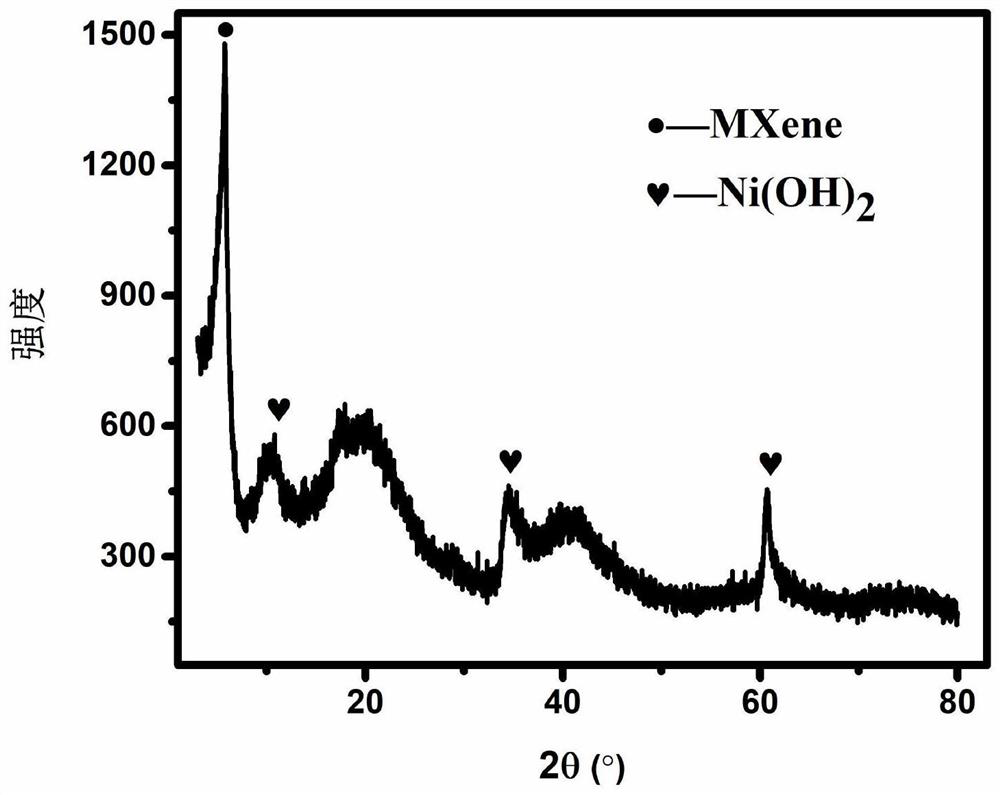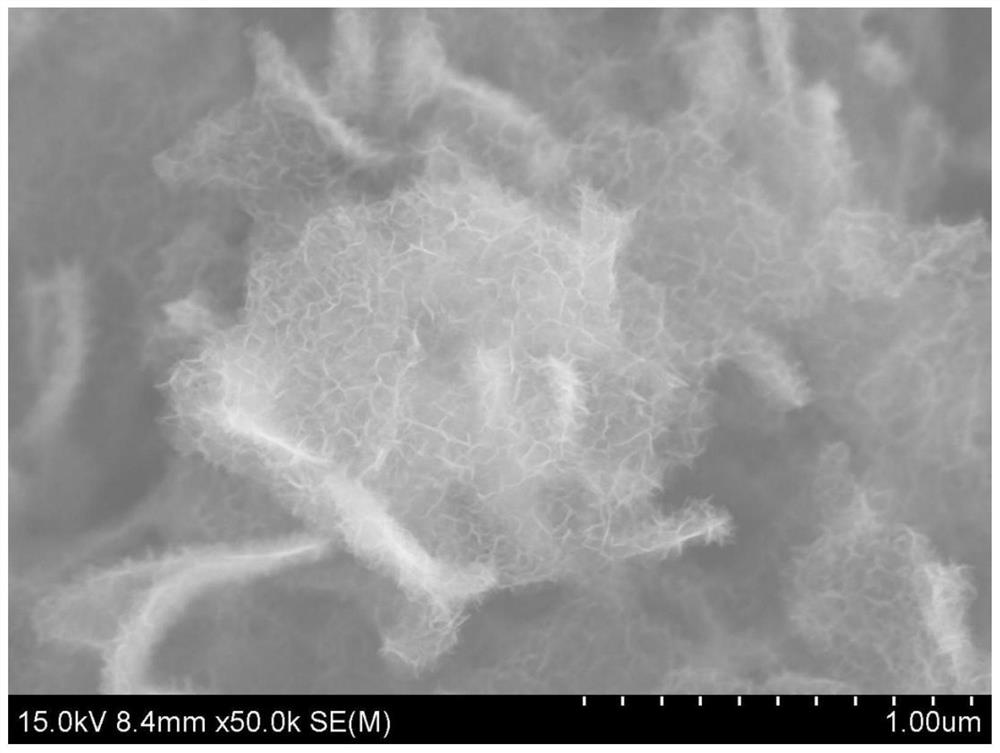A kind of negative electrode material of lithium ion battery and its preparation method and application
A technology of lithium-ion batteries and negative electrode materials, applied in the field of materials, can solve problems such as unsatisfactory, easily broken structure, and large volume changes
- Summary
- Abstract
- Description
- Claims
- Application Information
AI Technical Summary
Problems solved by technology
Method used
Image
Examples
preparation example Construction
[0030] The present invention also provides a preparation method for the lithium ion battery negative electrode material described in the above technical solution, comprising the following steps:
[0031] (1) Put Ti 3 AlC 2 , LiF and hydrochloric acid were mixed and heated, and the solid was collected by centrifugation to obtain layered Ti 3 C 2 Material;
[0032] (2) the layered Ti obtained in the step (1) 3 C 2 The material was sonicated in water followed by centrifugation, the liquid was collected and then dried to obtain the exfoliated Ti 3 C 2 Material;
[0033] (3) the stripped Ti obtained in the step (2) 3 C 2 The material, nickel sulfate, urotropine and water are mixed and then hydrothermally compounded to obtain the negative electrode material of the lithium ion battery.
[0034] In the present invention, all raw materials are commercial products.
[0035] In the present invention, Ti 3 AlC 2 , LiF and hydrochloric acid were mixed and heated, and the solid...
Embodiment 1
[0046] 1.5g of Ti 3 AlC 2 Put into a mixed solution of 2gLiF and 20mL 10mol / L hydrochloric acid and heat and stir at 30°C for 48h. Wash the corroded sample once with 1mol / L hydrochloric acid, then centrifuge and wash with deionized water until the pH value is 6, add 1000mL deionized water, sonicate for 3h under the protection of argon, and centrifuge at 2000rpm for 1h. liquid freeze-dried to obtain the exfoliated Ti 3 C 2 ; Take 0.1676g of stripped Ti 3 C 2 , add 70mL deionized water, add 0.1314g nickel sulfate hexahydrate and 0.2g utolopine after ultrasonication for 30min, stir for 30min, transfer to 100mL reaction kettle, keep warm at 90℃ for 10h, centrifuge and wash with deionized water three times Freeze-dry to get Ni(OH) 2 / d-Ti 3 C 2 composite material.
[0047] figure 1 is Ni(OH) 2 / d-Ti 3 C 2 The XRD pattern of the composite material, it can be seen from the figure that there is an obvious α-phase Ni(OH) 2 and Ti 3 C 2 peaks, proving that the material i...
Embodiment 2
[0051] 1.5g of Ti 3 AlC 2 Put into a mixed solution of 2g LiF and 20mL 10mol / L hydrochloric acid and heat and stir at 30°C for 48h. Wash the corroded sample once with 1mol / L hydrochloric acid, then centrifuge and wash with deionized water until the pH value is 6, add 1000mL deionized water, sonicate for 3h under the protection of argon, and centrifuge at 2000rpm for 1h. liquid freeze-dried to obtain the exfoliated Ti 3 C 2 ; Take 0.1676g of stripped Ti 3 C 2 , add 70mL deionized water, add 0.3942g nickel sulfate hexahydrate and 0.2g utolopine after ultrasonication for 30min, stir for 30min, transfer to 100mL reaction kettle, keep warm at 100℃ for 8h, centrifuge and wash three times with deionized water Freeze-dry to get Ni(OH) 2 / d-Ti 3 C 2 composite material.
PUM
 Login to View More
Login to View More Abstract
Description
Claims
Application Information
 Login to View More
Login to View More - R&D Engineer
- R&D Manager
- IP Professional
- Industry Leading Data Capabilities
- Powerful AI technology
- Patent DNA Extraction
Browse by: Latest US Patents, China's latest patents, Technical Efficacy Thesaurus, Application Domain, Technology Topic, Popular Technical Reports.
© 2024 PatSnap. All rights reserved.Legal|Privacy policy|Modern Slavery Act Transparency Statement|Sitemap|About US| Contact US: help@patsnap.com










